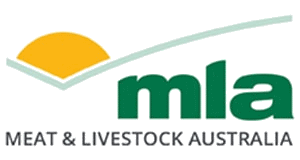PDS: Materix project – maximising breeders maternal matrix
| Project start date: | 02 April 2025 |
| Project end date: | 30 March 2030 |
| Project status: | In progress |
| Livestock species: | Grass-fed Cattle |
| Relevant regions: | Northern Australia, Queensland |
| Site location: | TBC |
Summary
The Girl Power Group came together in late 2020 for the MLA PDS GIRL POWER PROJECT (GPP). Participating beef producers worked through facilitated sessions, then on-property management and practice changes, to understand trial processes and enhance the performance of their maiden heifers. With a focus on Critical Mating Weight (CMW) and preg-testing, these producers were able to demonstrate improvements and/or issues with lifting early reproductive outcomes, achieving a majority of 90% and above pregnancy rates in the first join.
Bad mothering and calf loss between pregnancy testing and weaning are now evident as the critical factors of poor performance for these novice breeders. Also, the maiden cows’ re-conception rates are too low. The GPP producer data sets so far collected and analysed show first calf losses to be up to 25% and re-conception as low as 30%, respectively. Both these issues are impacting many regional and northern Australian rangeland producers, reducing productivity, income and efficiency, and slowing herd rebuilds, as first and second calvers make up 40% of the average rangeland self-replacing breeder herd. Many producers, however, are not aware that this cohort is having a large negative effect, as they have not collected such data as those in the Girl Power PDS.
This Co-Contributor Producer Demonstration Site project aims to demonstrate the management practices that improve the mothering outcomes, calf survival through to weaning, and re-conception rates of maiden heifers in self-replacing beef breeder herds in the extensive rangelands of Queensland, increasing participating producers' knowledge, skills and confidence.
Objectives
In the Desert Uplands of Queensland, by June 2029, the project will establish 2 demonstration sites, engaging 15 core producers and over 50 observer producers to:
- Investigate and explore potential issues and reasons for adverse outcomes for novice breeders - calf loss and poor re-conception of 15 participating core producer entities through facilitated sessions/workshops, using industry research and data and experiential group knowledge; to determine preferable, available management strategies and changes needed to address this adversity; and enable group collegiate support, agency assistance and access to project’s expert panel and advisors.
- Increase the knowledge and skills of 100% of core producers and 50% of observer producers in managing novice breeders as a result of participating in the project through the delivery of:
- 3 Annual facilitated Zoom sessions to fill on-farm knowledge, implementation and technical gaps and to strengthen the group and its close network.
- Annual field days and other communication and extension activities, elucidating demonstrations, practice and management changes and their results, to at least 50 attending and 100 virtual beef producers annually.
- Demonstrate and implement selected practice changes of management of novice breeders that:
- Decrease the differential between the number of maiden heifers preg-tested ‘into the paddock’ and the number of calves they bring to the yard for weaning by 20%*, and
- Improve maiden cows’ re-conception rates by 20%*.
- Conduct a simple cost-benefit analysis to determine the relative economic benefit of practice change for the 2 demonstration sites by June 2029. By consultant Peter Whip of PW Agribusiness, Longreach.
- 100% of core and observer producers will have increased their confidence and will understand key inflexion points and matching management and decision-making needs for their replacement females’ maturation cycle. Resulting in 80% core producers and 50% observer producers having implemented at least one practice associated with best practice management of novice breeders as demonstrated throughout the project.
*These improvements will be from baseline data sets for each of the 15 participating properties collected in the project's first ‘control’ year (July 2025-July 2026) and achieved by June 2029.


